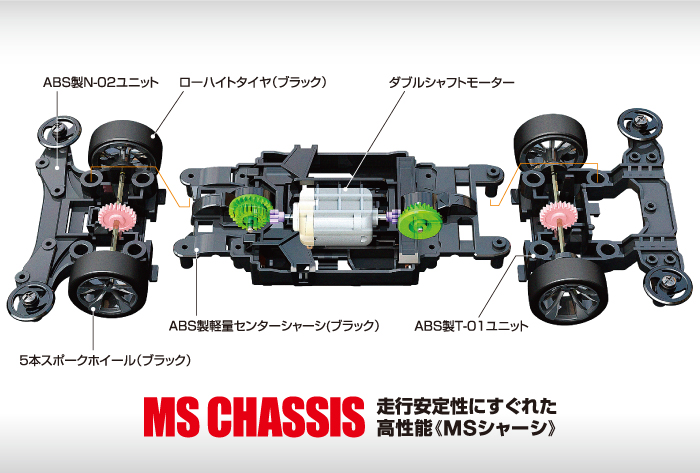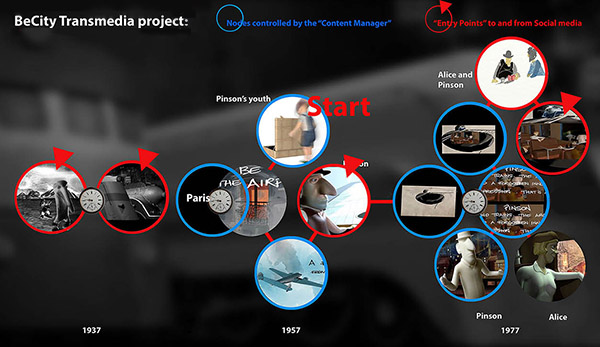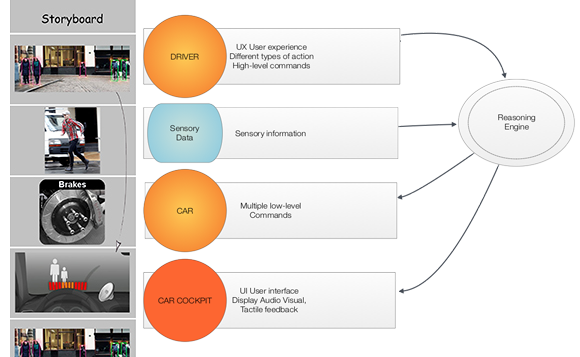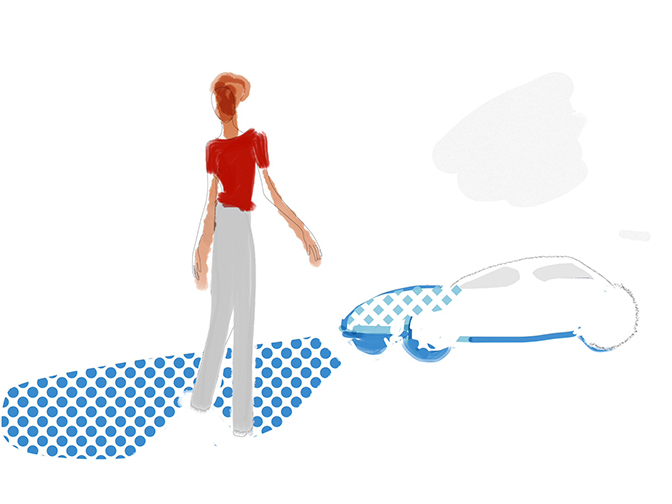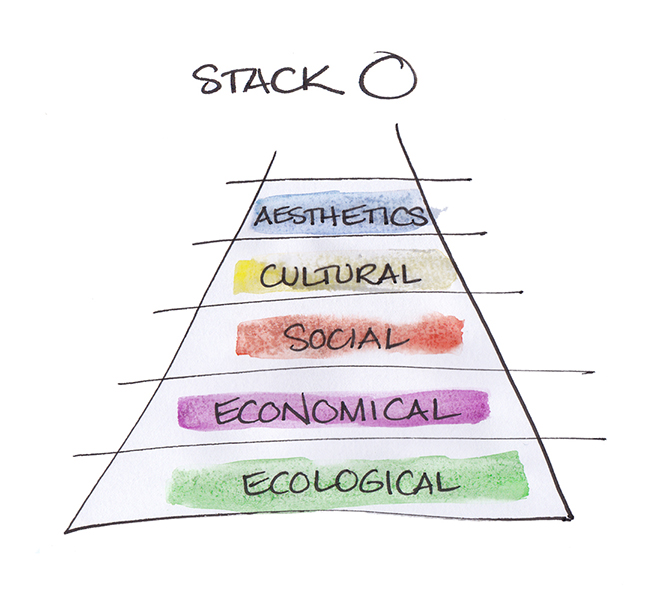Toys can be utilized to improve natural communication between cars and humans. Great toys are approachable and intuitive. Kota Nezu, a former Toyota i-unit designer, created cars designed like toys that can be immediately recognized and understood. He finds in toys the starting point for developing new design concepts related to human-car interface, computer vision and robotics. Kota Nezu 's designs opened the way for a new visual language that connects playfulness and pleasure of driving an intelligent car with automation and sensors.
The collaborative nature of the longform documentary work leaves stories open for change. Journalists and editors can edit the content and create updates that may grow into sub-stories. This is very obvious when a story first breaks in the news.
The initial story may organically break into modules specially if there are some conflicting versions of the initial story. In this case, one of the modules of the story may become the main story. Website designers use modules of stories that are also modules of code which are reusable and can be dragged and dropped in different places of the layout.
This is the concept of a liquid layout where elements of content are curated, edited and reused, according to the angle of the story being told. This is in the process of being automated.
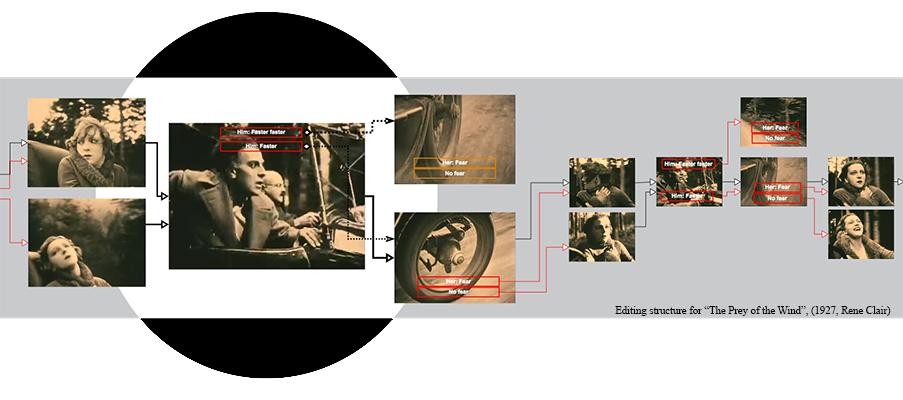
Any thoughts about the interconnection between storytelling and technological innovation? I am focusing on films and animations that had an impact on the audience and shaped our natural attraction to playfulness and complexity in our everyday life.
“All we see are perceptions mistaken for reality.“ Alan Moore (V for Vendetta, Watchmen,The League of Extraordinary Gentlemen)
Following technological innovation in the film industry, over the course of the times, we see things emerging, interconnections between technological innovation and storytelling, creating patterns of change that repeat at different times of the history of film.
The modernist: Lana Wachowski (The Matrix Trilogy, Speed Racer, Cloud Atlas) is one of the most "modernist" filmmakers who views the loss of stories and of memories as a necessity in order to make space for the new.
Let's meet first
Please send us an email, introduce yourself and let us know what you have in mind or what your project is about. Do you already have an idea that you would like to develop further or would like us to help find ideas for you? Perhaps you would like to set up an appointment to discuss the project in person.

Have you tried these digital longform documentaries on the web?
Digital longform is a domain where collaboration between writers, photographers, video makers, web designers, audio designers and programmers is fully integrated from the start. This is an iterative process where each piece of content is created for publication on the website or on an app. Digital longform has been a game changer from its creation in 2012 with Snow Fall by the New York Times. One of the first attempts was Ian Coyle's Nike Better World in 2011.

October 29th, Wednesday 6pm
Keio-NUS CUTE Center 2nd floor, iCube building 21 Heng Mui Keng Terrace, NUS
As a designer, each project extends beyond the creation of an object in space, it includes the experience of the user and a larger eco system of interactions around the user. On the other hand the language of the designer expresses choices, filtering our focus in time. It reveals priorities, sequences and stories.
This talk will present new projects at the intersection of design and storytelling created with tinkertoo, an interactive design studio based in Singapore. Jean-Marc Gauthier is an interactive designer whose work oscillates between interactive installations created inside a physical space and more recent works where the viewer is immersed inside the timeline of a story.
JMG will discuss design strategies to curate and to focus content according to the context and the activities of the user. This includes strategies for automated dynamic publishing, aggregations of content by machines, timeline engines for filmmaking, and iterative design.
Question #1 - Where to start when developing an immersive simulator?
We use an immersive multiple display technology that allows seamless visuals between the screens. This offers an important element of suspension of disbelief for the viewer or the user
More about JMG's immersive projects.
The visuals on the screens are captured by a node of virtual cameras placed inside a virtual world (One virtual camera per screen) The user standing inside the physical space of the nstallation is also located at the center of the node of virtual cameras inside the virtual world. We create a very accurate deformation for the peripheral vision of the user. The main innovation has been to achieve a 15 ms synchronization between moving images of objects and the moving sound nodes attached to the objects. The viewer can follow the trajectory of a moving object with the eyes closed by listening to a sound node as it crosses the screens.
Question #2 - How to digitize motion from a viewer?...
The growth of global cities puts more pressure on efficient transportation systems and on the regulation of car traffic. People are also more demanding about the cars that will enable them to travel through the increased density. As a result, the design of cars is becoming influenced by the demands and constraints of an increasingly urban population.
Cars need to be more environmentally friendly, smarter and be able to accomplish more complex tasks. Until recently, humans drove cars and made forecasts about their paths through the city. Some drivers are traffic experts from experience, others are listening to news about the traffic on the radio.
The new meshing of sensors around and inside the car creates a new driving experience. Sensing provides the driver with real-time information about the context and the spatial and social environment of the car. This can include local sensors (computer vision, stereo vision, infrared vision, radar, Lidar, and differential GPS) and participatory sensing which involves sharing data from several cars.
An important factor of the new driving experience is usability and visualization. Valuable information needs to be provided to the driver in real time.
Context and ideas for the Connected Car.
The car is central to our individual transportation, now and in the future. But this mobility comes at a high price. Until recently, the environmental, urban and social problems created by the increasing number of cars have been brushed away, neglected or considered as something that can’t be changed in our way of life.
Today, there is strong social and political pressure for finding new car designs that will reduce pollution, noise levels, saturation of public spaces and traffic jams. The relationship between people and cars is slowly changing on many levels: ecological, economical, social, cultural and aesthetics. Today’s car is the largest personal device but ironically today’s pedestrian can be more connected to the rest of the world than the driver of a car; for many reasons.
Last Spring, a thick silence followed one of my talks. The audience left the auditorium with barely any questions, faster than I wished, maybe they were distracted by other activities. I asked myself if my talk was helping others, if the topics that I chose to share were important or of interest to others. Or maybe, I became complacent, listening to the music of my own voice, following my own mental constructions; something that the audience had x-rayed, analyzed, categorized and judged within the first minutes of my speech.
There I was standing in front of the polite audience that filled the auditorium. The air was empty, without emotion, without feedback but nobody was leaving. I kept on following my string of slides but something seemed broken. I could not repair the connection that was lost. I entered a mental blizzard, crossing a very empty section of the map: la traversee du desert.

